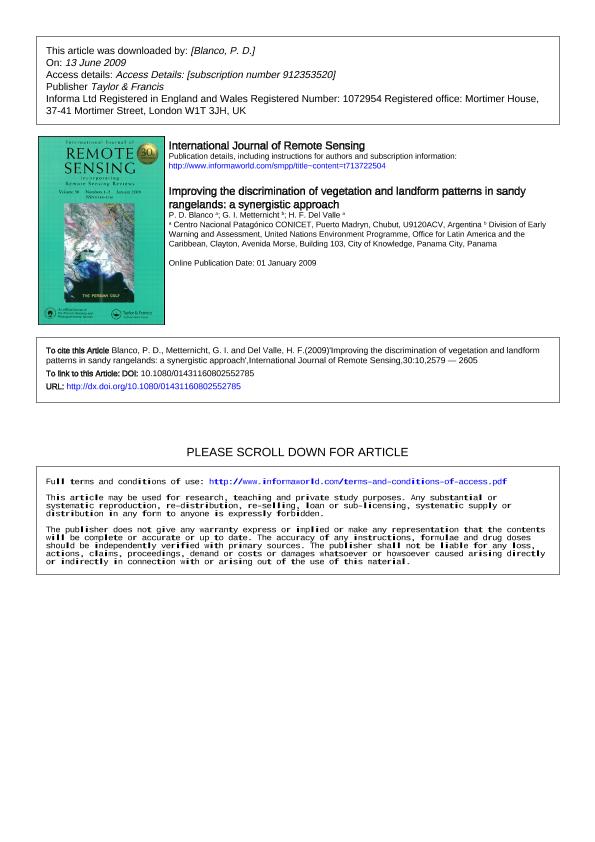Artículo
Improving the discrimination of vegetation and landform patterns in sandy rangelands: A synergistic approach
Fecha de publicación:
05/2009
Editorial:
Taylor & Francis
Revista:
International Journal of Remote Sensing
ISSN:
0143-1161
Idioma:
Inglés
Tipo de recurso:
Artículo publicado
Clasificación temática:
Resumen
Soil erosion is a key factor in land degradation processes in the sandy rangelands of the Peninsula Valdes of Patagonia, Argentina. Mapping landform and vegetation patterns is important for improving prediction, monitoring and planning of areas threatened by sand and shrub encroachment. This paper investigates the contribution of optical sensors, such as the Terra Advanced Spaceborne Thermal Emission and Reflection Radiometer (ASTER), and textural measures derived from microwave Radarsat Advanced Synthetic Aperture Radar (ASAR) to their discrimination. An evaluation is undertaken to compare the classification accuracy achieved by specific regions of the spectrum and their synergistic use in an object-oriented approach. Image segmentation and object-oriented classifications were applied to the datasets. This required defining appropriate fuzzy membership functions for characterizing active and stabilized lineal dunes and the main vegetation classes. Improvements in the discrimination of active and stabilized dunes (vegetated by either scrub or grass) were achieved by using an object-oriented classification that integrated microwave and visible near-infrared (NIR) data. Changes in surface roughness caused by different vegetation types stabilizing the dunes affected the radar backscattering. Whereas Radarsat enabled a clear separation of scrub-stabilized dunes, Terra-ASTER showed superior performance in the cartography of grass-stabilized dunes. The synergistic use of microwave and visible and near-infrared (VNIR) data yielded a substantial increase in the discrimination and mapping of landform/vegetation patterns.
Palabras clave:
ASTER
,
RADARSAT-1
,
LANDFORM MAPPING
,
VEGETATION PATTERNS
Archivos asociados
Licencia
Identificadores
Colecciones
Articulos(CCT-CENPAT)
Articulos de CTRO.CIENTIFICO TECNOL.CONICET - CENPAT
Articulos de CTRO.CIENTIFICO TECNOL.CONICET - CENPAT
Citación
Blanco, Paula Daniela; Metternicht, Graciela; del Valle, Hector Francisco; Improving the discrimination of vegetation and landform patterns in sandy rangelands: A synergistic approach; Taylor & Francis; International Journal of Remote Sensing; 30; 10; 5-2009; 2579-2605
Compartir
Altmétricas




